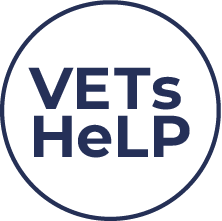Enuresis - clinical fact sheet and MCQ
Overview
Enuresis, commonly referred to as bedwetting, is the involuntary release of urine during sleep in children over 5 years of age. ‘Enuresis’ is reserved for nighttime wetting, while daytime wetting is classified separately as urinary incontinence. Enuresis can be further categorised as primary, where the child has never achieved a prolonged dry period, and secondary, where bedwetting recurs after at least 6 months of dryness.
The condition affects up to 10% of 5-year-olds and tends to decrease with age, with only about 1% of those aged 15 and older still affected. Boys are twice as likely to experience enuresis compared to girls. Emotional support and a non-punitive approach from parents/carers are essential, as bedwetting can affect self-esteem and psychological wellbeing.
Enuresis involves a discrepancy between nocturnal urine production and functional bladder capacity, coupled with an inability to wake from sleep when the bladder is full. Additional aetiological factors include nocturnal polyuria (such as from lack of nocturnal antidiuretic hormone secretion), abnormally reduced bladder capacity, and sleep arousal disorders.
Risk factors for enuresis include:
Lorem ipsum dolor sit amet, consectetur adipiscing elit. Maecenas eu odio in nibh placerat tempor ac vel mauris. Nunc efficitur sapien at nisl semper dapibus. Nullam tempor eros sed dui aliquam lacinia. Nunc feugiat facilisis ex.
Vestibulum ante ipsum primis in faucibus orci luctus et ultrices posuere cubilia curae; Maecenas mauris nibh, tempus sit amet erat vel, pellentesque maximus ipsum. Suspendisse dui nunc, porta ac ultricies id, sodales eu ante.
The Medcast medical education team is a group of highly experienced, practicing GPs, health professionals and medical writers.
Become a member and get unlimited access to 100s of hours of premium education.
Learn moreCo-billing and split billing are often a source of confusion for many GPs. This FastTrack clearly defines these two methods of billing, including examples, explanations of when it is and isn’t appropriate to co- or split bill, and common compliance pitfalls. 30 mins each RP and EA available with the quiz.
The Coordinated Veterans’ Care (CVC) Program is a DVA initiative that allows GPs to provide structured, proactive care in the community for eligible veterans and war widows. This FastTrack provides a guide to billing the CVC program, and outlines a strategy for its practice-wide integration.
Achilles tendinopathy is a common cause of posterior heel pain and functional impairment. GPs are well-placed to coordinate care for these patients. This FastTrack fact sheet provides a concise summary of diagnosis and non-surgical management, including when to refer. Earn 30mins each RP and EA CPD with the quiz.

